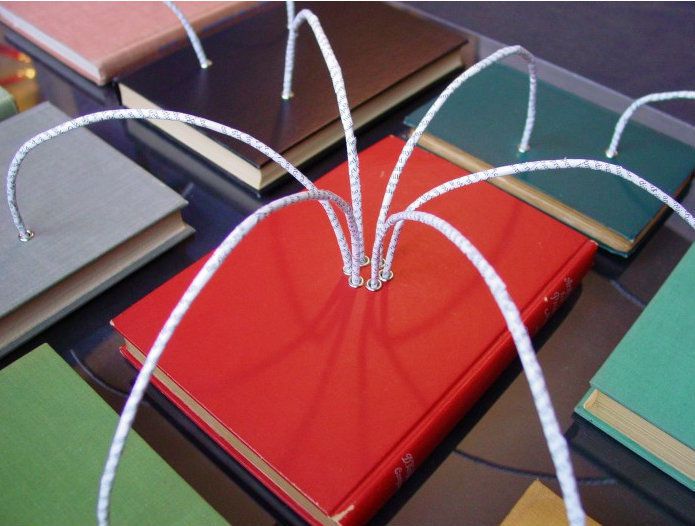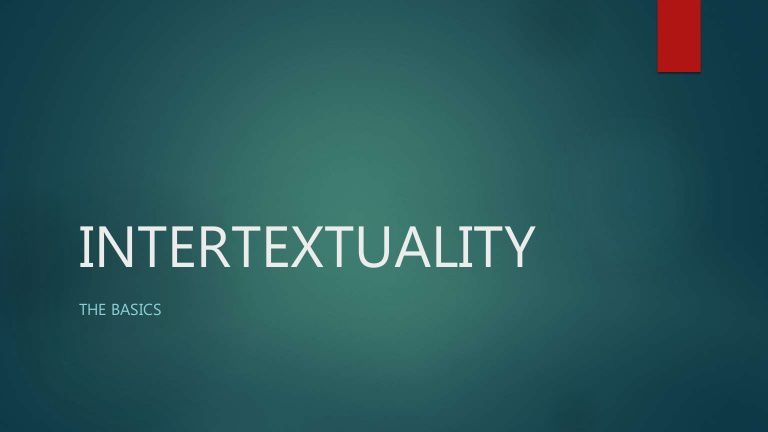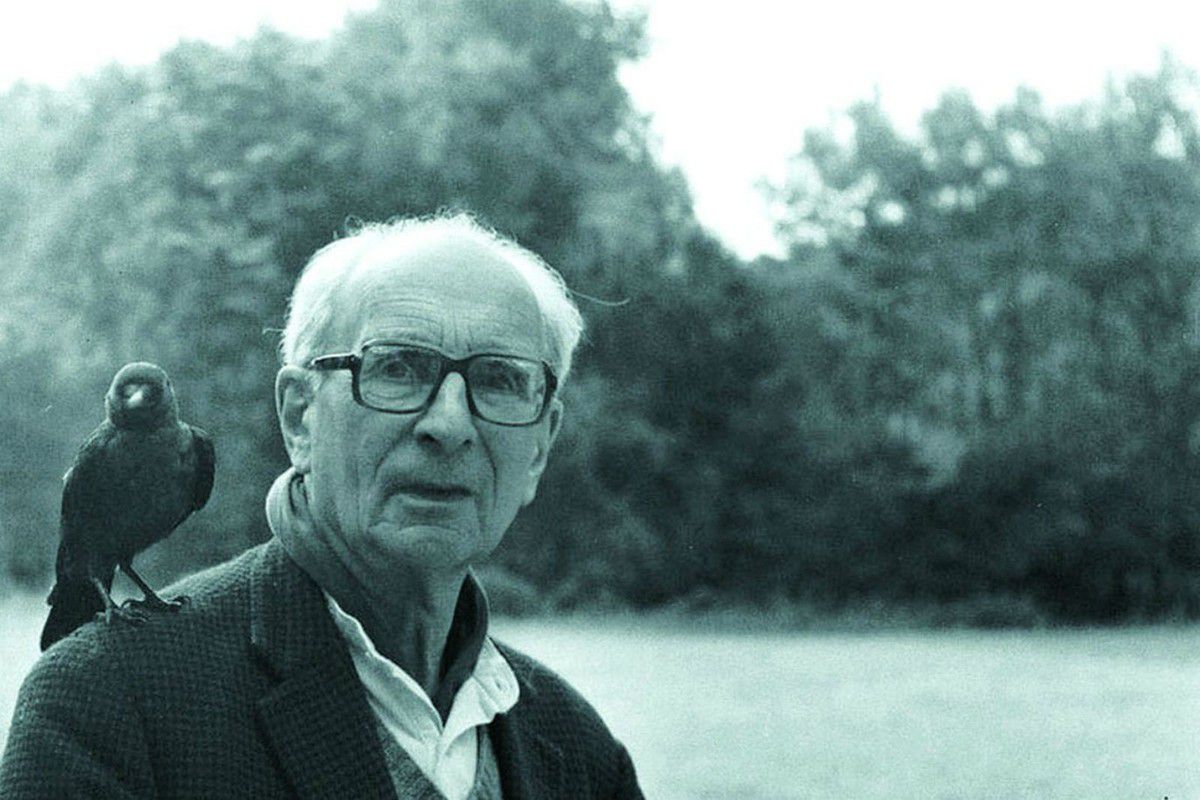The concepts of rewriting and intertextuality. (4)
As we demonstrated, the process of revisiting a work allows the author to give his personal vision of a work. He can also make transformations in order to make it actual. Giving his own vision, the author finds in the rewriting concept a way to condemn a phenomenon that touches himself.
Here, it is very important to analyse the four sources as being a whole and not as being seperated entities : the four sources represent a corpus and not just four different ideas. This notion is reflected in the fourth source with the theory of Julia Kristeva about the vertical axis : “The semiotic notion of intertextuality […] referred to texts in terms of […] a vertical axis, which connects the text to other one'. Here, as an example, the vertical axis between the first three sources is that they shared the common idea of denouncing a subject of current interest. They also wanted to convey a message that can appeal the reader. As Daniel Chandler evoks, “Although Saussure stressed [that] one of the weaknesses of structualist semoitics is the tendency to treat individual texts as discrete, closed-off entities and to focus on internal structure”, analyzing a work as being different and seperated from another one can be an automatic reflex for everyone, but also for linguist : the head does not directly combine the works presented as being a whole because of their shape, they have a different external structure and are limited. That is why the fourth source is really helpful, because it defines the concept of intertextuality and its bases. As the first three sources illustrate the concept of rewriting, it is important for me to compare both concepts of intertextuality and rewriting as being two different notions, but which shared common ideas.
As a definition, we can say that the rewriting is “a process of revisiting something previously written” (from Merriam-Webster) and the intertextuality, as quoted before, “the complex interrelationship between a text and other texts taken as basic to the creation or to the interpretation of the text”(from Merriam-Webster). But, more precisely, what are the similarities between those concepts? First, both concepts are based on the notion of picking already-written² (written or realized) sources to create their new work. In the source one, Erizku used the same posture for the woman than in the Vermeer's version. Grahame-Smith's book, he used more than 80 % of the original story of Jane Austen. They took old works to make new ones.

But mostly, intertextuality and rewriting are different at many points. They both pick ideas in other sources but at different scale : the rewriting process tends to be influenced only by one text. On the contrary, the intertextuality is a mix of a lot of different sources, all of which are present in a limited quantity. Secondly, the act of rewriting is a conscious act : the author knows in advance that he is going to write/create about another already-written source.

On the other hand, the intertextuality is often, but not always, an unconcious act. This idea is defended by Anne-Claire Ginoux in her analysis called “ From the intertextuality to the rewriting” in Books of Narratology. Anne-Claire Ginoux "De l'intertextualité à la réécriture." I am, myself, using intertextuality right now: at the beginning of the paragraph, I used the term corpus which I read in the source number four. I am sure that if I had not read this text, I would not have used this word. So, intertextuality is sometimes an action of our subconscient and we will probably do not become aware of the borrowing we just made. Thirdly, it is important to add that the rewriting, even if it is different from the original version, for example the Jane Austen's book, the story of Grahame-Smith is based on a novel which is pre-made by the frame for the story. The author has more freedom by using intertextuality than in rewriting.

As Claude Lévi-Strauss - cited and explained in the source four - created with his notion of bricoleur arguing that “The first aspect of bricolage is...to construct a system of paradigms with fragments of syntagmatic chains”. The bricoleur notion points out the fact that the author builds his work on contrusting a new organization by using preexisting ideas. The source four is itself a great example. To describe his vision of intertextuality, Daniel Chandler borrowed ideas to Julia Kristeva, Roland Barthes, Michel Foucault and Claude Lévi-Strauss. His work is a perfect example of what he is actually talking about. Seth Grahame-Smith is also a bricoleur using elements from Austen's classical book but also elements from science-fiction (“zombies”) and mangas (“Katana”). The act of picking elements is only one part in the intertextuality process, as Chandler says “ Logically (following Quintilian), the practice of bricolage can be seen as operating through several key transformations : addition, delection, substitution and transposition”. For me, intertextuality is a real form of art : the author tries to create something which can be compared to cubism : collage, fragmentation...The source two shows that Francis Bacon picked elements from Velazquez's work but also put yellow ligns looking like flams, recreating a brand new portrait of the pope. The representation of ligns and the colors are not pointing out apart from the monochromatic colors (purple, white and yellow); The concept is to highlight the shape and not the colors: of course this painting is not belonging to the cubism for 100% but we can find elements from this artistical movement. And I think that we are not completelly wrong because Francis Bacon was admirring Picasso and his works, as being a fervent partisan of cubism.
² Term used by Roland Barthes.



/image%2F2286098%2F20170305%2Fob_e9e703_capture-d-ecran-2017-03-03-12-20-55.png)
/image%2F2286098%2F20170305%2Fob_1ed195_f2b6c4fbd11a00f028109ac2950b63b4.jpg)
/image%2F2286098%2F20170305%2Fob_6bb883_lkn.png)
/image%2F2286098%2F20170305%2Fob_c8df72_1473264229-conclusion.png)
/image%2F1375842%2F20170303%2Fob_26db21_rewriting.jpg)